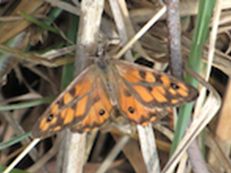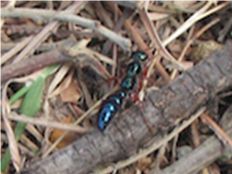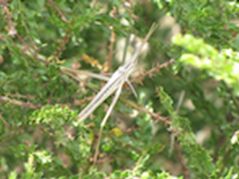The holiday season has been a difficult one for the Hooded Plovers.
The pair at Moggs Creek lost their first nest during a very high tide in late November. There were two eggs on November 22 and the nest had been safe from earlier high tides, however it was completely washed out the next night and the eggs were gone. In January, their second attempt ended with a fox taking the two eggs. Fortunately the two parent birds were safe.
There is one chick at Guvvo’s Beach. It is a healthy, active chick and we are hoping for the best. Additionally, at the time of writing, there are two chicks at Pt Roadknight and one chick at the Pt Roadknight West site.
Georgie Beale, from GORCC, found a Fairy Prion resting in seaweed on a rock platform at Point Roadknight. It appeared to be in a weakened condition and was monitored throughout the day. As the tide came in there were fears it might be washed out, so the bird was moved to a safer spot in a rock depression. As the bird remained very docile and inactive, it was taken to the Surf Coast Wildlife Shelters Group at Bellbrae for assessment. They will let us know what the outcome is for that little bird.
Crabeater Seals are normally found on pack ice in Antarctica. However last month, a young male Crabeater Seal visited Anglesea beach. After resting for a day or so it returned to the water on the high tide.
Another occasional visitor to this coast, an Osprey, was seen at Aireys Inlet in December.
A female Swamp Antechinus was found on a walking track at Anglesea River in December. As it didn’t have any obvious injury, the cause of death is not known. There was also a dead, male Agile Antechinus found at Anglesea Bushland Reserve in Elizabeth Street. This particular animal had an unusually short tail that resembled more closely a Swamp Antechinus. However Barbara Wilson examined the front paw pads and found they were formed like those of the Agile Antechinus.
The very hot days we are experiencing during the summer cause stress to native wildlife. I always recommend placing containers filled with water in the garden. Birdbaths are fine but also include a shallow water dish on the ground for animals such as echidnas and bluetongue lizards.
Kaye Traynor
Additional Report from Neil Tucker
During January, I went to a small, little-known reserve at Freshwater Creek. It contains some remnant Volcanic Plains Grassy Woodland, with Thompsons Creek passing through. For such a small reserve it was wonderfully diverse, particularly considering the time of year and the dry conditions. On behalf of the Surf Coast Shire, I made plant, bird and weed lists and also noted other species. The insects were interesting, I have managed to identify some of them from the internet:
- Two brown butterflies, Common Brown and Klug’s Xenica

Klug’s Xenica
- A Bluebottle “ant” that is actually a wasp, with a nasty sting. It paralyses crickets and buries them with an egg laid on each. It was a new observation for the Shire so I have added it to the Atlas of Living Australia

Bluebottle Wasp
- A Giant Green Slantface (don’t you love the name?) This is a large grasshopper, again not recorded for the Shire

Giant Green Slantface
- Stink beetles and native bees.
I intend visiting more of the Shire’s other reserves over the next few months. If you would like to join me, let me know at neilt@pipeline.com.au.